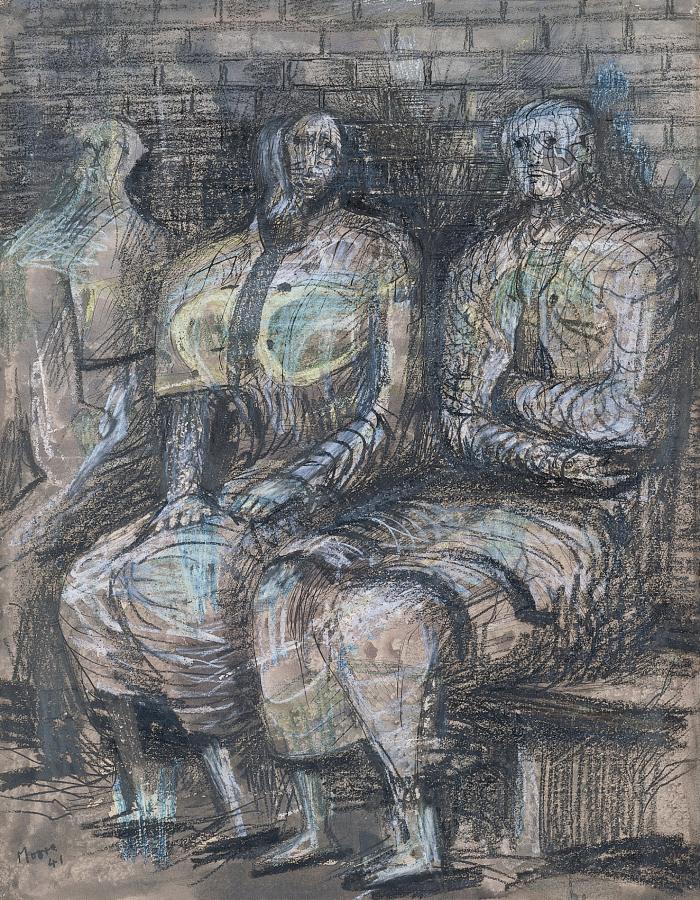Moore, Henry (1898-1986)
Three Seated Figures
1941
Indian ink with charcoal, wax crayon on papel mounted on board, 48 x 37 cm
Museo Thyssen-Bornemisza, Madrid
©The Henry Moore Foundation. All Rights Reserved
Drawing became an ideal medium for the British sculptor Henry Moore as it enabled him to explore his ideas for sculptures in two dimensions. When the infernal Blitz began on 7 September 1940 and the sky above London was filled with German bombers that destroyed much of the city, forcing over a hundred thousand civilians to seek refuge in the underground stations, Moore produced his moving series known as the Shelter Drawings, which are among the most significant images in war mythology. According to the artist’s own account, on the night of 11 September 1940, when he and his wife Irina had to take cover from an air raid in the Belsize Park underground station near his house, he was touched by the sight of the people camping out in the station’s tunnels. “I saw hundreds of Henry Moore Reclining Figures stretched along the platforms, ” he wrote, adding that “even the train tunnels seemed to be like the holes in my sculpture.”
Shortly afterwards, in January 1941, Moore received an invitation through Kenneth Clark, then director of The National Gallery in London, from the WAAC (War Artists’ Advisory Committee) to become an official war artist and for over a year he devoted himself solely to making numerous sketches and drawings inspired by that vision. These drawings were not done from life, but at his house in Perry Green, on the outskirts of London, to which he had to move after his London studio was bombed in 1940.
Three Seated Figures, executed in 1941, is one of the drawings from the aforementioned series. The air of silence that pervades the scene and the dramatic force of the female figures, who stand out against the brick walls of the tube station, matchlessly capture the feeling of expectation and resilience of these people in the underground shelter. The empathy with which it is executed and Moore’s manner of conveying the tension of these people suggest a humanism with existentialist overtones. Furthermore, the monumentality of the three figures, who are swathed tightly in drapery, recalls the archaic sculpture which had such a great influence on Moore during those years. The allusion to the theme of the Three Graces also denotes the influence of Mediterranean tradition. The artist himself described this time as the period “after I had left Masaccio behind in Florence and had once again come within the attraction of the archaic and primitive sculptures of the British Museum.”
Paloma Alarcó (T-B)
